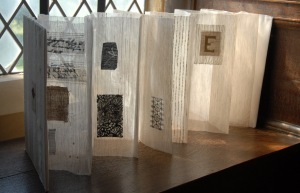Yesterday, I made another trip to Hardwick Hall to help (well, mainly watch) textile artist Jan Garside and her collaborators install a set of three responses to our research, and to the themes of the ‘Virtue and Vice’ exhibition.
Month: July 2013
‘Go your ways for an Apostata’: the converting Courtesan
I’m really delighted to have been given the chance to contribute to the Dutch Courtesan project, an all-singing, all-dancing (and all-acting) web resource that has accompanied and informed a brilliant recent production of the play here at the University of York.
My interest in the play was piqued by one peculiar phrase, in which the title character declares: ‘Mine body must turn Turk for twopence’. Intrigued by this glimpse of an Islamic conversion, I began to explore the connections between religion and inconstancy that underpin this difficult, but intensely rewarding, drama. To find out more about my conclusions, read my article on the Dutch Courtesan project website.
Picture of a reading table?
A couple of days ago, I wrote a post about Bess of Hardwick’s reading. What I didn’t mention there was the description of the table on which Bess kept her books. According to the 1601 inventory of Hardwick, Bess’s books sat in her bedchamber, next to an hourglass and a mirror. Whilst it’s tempting to imagine these as the early modern version of an alarm clock and a looking-glass, for Bess they almost certainly had a more serious purpose. Continue reading
Public History at Hardwick
As regular readers of this blog will know, the Conversion Narratives team were delighted to welcome Hannah Hogan into our ranks during the spring term. Hannah has written a new blog post, reflecting on her experiences as an intern, working towards the ‘Virtue and Vice exhibition at Hardwick. You can read it over on the web pages for York’s Institute for the Public Understanding of the Past’.
A book that converted…
As part of the work of putting together the ‘Virtue and Vice’ exhibition, I got to return to a question that has fascinated me for a long time: women’s reading in the early modern period. Though moralists fulminated against the perils of women’s reading, and warned that it was likely to lead to all sorts of venereal vices, there is good evidence to show that women read widely, and that they enjoyed devotional and religious literature alongside a wide range of fictions, poetry, and other writings. Continue reading




